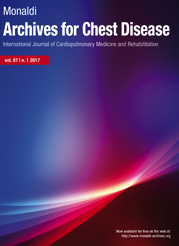Prevalence and predictors of suboptimal peak inspiratory flow rates in the management of chronic obstructive pulmonary disease
All claims expressed in this article are solely those of the authors and do not necessarily represent those of their affiliated organizations, or those of the publisher, the editors and the reviewers. Any product that may be evaluated in this article or claim that may be made by its manufacturer is not guaranteed or endorsed by the publisher.
Accepted: 18 October 2024
Authors
This cross-sectional study aimed to investigate the role of peak inspiratory flow rate (PIFR) in the management of inhalation therapy for patients with chronic obstructive pulmonary disease (COPD). Conducted in the Department of Pulmonary Medicine at a tertiary care institute from July 2021 to January 2022, this study included a total of 351 patients who were clinically diagnosed with stable COPD and currently receiving inhaler therapy. Participants underwent comprehensive assessments that included demographic data collection, the use of the ABCD assessment tool to evaluate disease severity, the COPD Assessment Test (CAT) for quality of life measurement, and assessments for adherence to inhaler therapy and inhaler technique proficiency. The primary focus was on determining the prevalence of suboptimal PIFR and identifying associated demographic and clinical factors. The results indicated that 45% of the patients exhibited suboptimal PIFR, which is critical for effective medication delivery in COPD management. Analysis revealed several significant predictors of suboptimal PIFR: female gender, lower CAT scores, the type of inhaler device used, and a Modified Medical Research Council grade of ≥2, which indicates increased levels of breathlessness. These findings underscore the importance of assessing PIFR in COPD patients to ensure effective drug delivery. The study suggests that personalized inhaler device prescriptions tailored to individual PIFR can enhance treatment efficacy and improve overall management outcomes for COPD patients. By addressing factors contributing to suboptimal PIFR, healthcare providers can optimize inhalation therapy and ultimately improve patient quality of life.
Ethics Approval
The study protocol was approved by the Institute Scientific Committee, Institute ethics committee (JIP/IEC/2021/063).How to Cite

This work is licensed under a Creative Commons Attribution-NonCommercial 4.0 International License.






